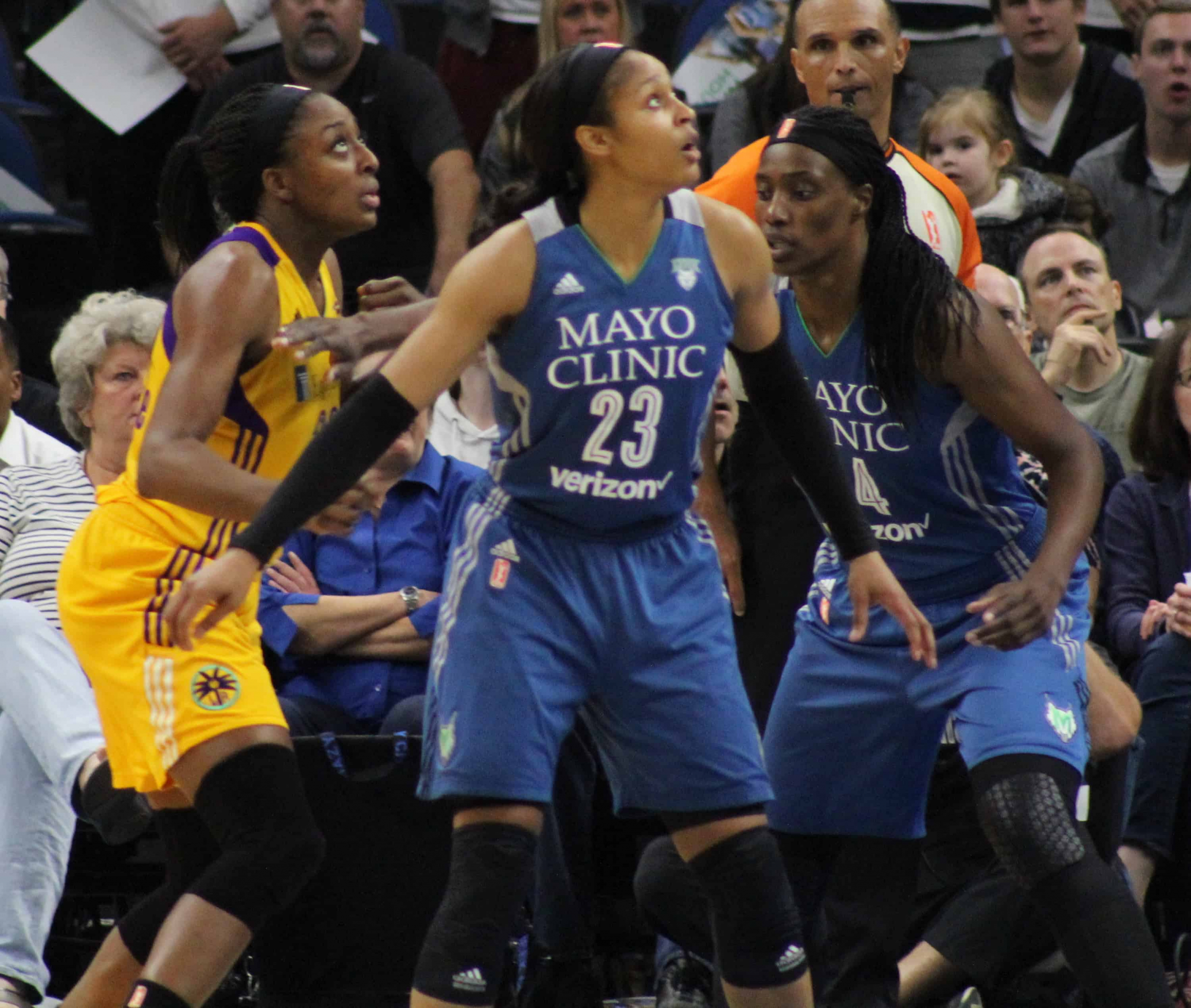Across disciplines, athletes are united by their mutual pursuit of excellence. Each face a particular set of challenges and roadblocks, whether they be financial, physical, or psychological. Athletes have to overcome these difficulties to make it to the professional leagues, the pearly gates of sponsorships, adoring fans, and custom shoes. But for the majority of professional female athletes, this is not the case. For women, who already face more barriers to athletic success than their male counterparts, the pearly gates are rusted shut.
As CBS reports, although the Title IX civil rights law in the US regulates equal opportunities between male and female athletes, “there are still major discrepancies in pay, facilities and exposure.” Further, professional women’s sports are marginalized by the sports media complex, diluting their representative power for up-and-coming young female athletes. The few women who do manage to rise to professional athletic acclaim, such as Serena Williams and Lindsey Vonn, are anomalies. For the majority of female professional athletes, their athletic careers are just one facet of an incredibly busy life.
In recent years, pay discrepancies between male and female employees have been thrust into the limelight. Although women have been advocating for equal pay for decades, only recently has this gap become a genuine topic of discussion in the public sphere. On average, in the US, women earn roughly 77 per cent of what their male counterparts earn. However, women have the same expenses as men, the same education, and the same great rapport with their boss. So why are they paid less? Because of gender identity. It is also important to note that these discrepancies are much worse for women of colour. Black women make 65 cents to every white man’s dollar, and Hispanic women make only 58 cents. These intersecting vectors of oppression are visible across industries, including professional sports. As the field of elite athletics is dominated by men, it should come as no surprise that the pay gap between male and female athletes is even worse.
Let’s illustrate this by taking a look at professional basketball. The average salary in the NBA is approximately $5.9 million. The league’s top earner in 2018, Stephen Curry, will make nearly $37.5 million this year — and that’s not including sponsorships or other advertising deals. The pay ceiling per team in the league is $99,093,000. Many NBA players who depart college enter the league and instantly own houses, cars, and live lavish lifestyles. In the offseason, they train with their team members, work out with personal trainers, and rest for the coming season.
Now cut to the WNBA. The average salary hovers around $70,000. Their team salary pay cap is $976,300. Most WNBA players don’t get an off-season — instead, they get on a plane. Take Los Angeles Sparks star and 2016 league MVP Nneka Ogwumike for example. Most of her overall income comes from her contract with Dynamo Kursk, a Russian pro team that she plays for in the WNBA’s off-season. She doesn’t own a house or car; instead, she’s saving up for her master’s degree.
The potency of this issue is further illustrated by Diana Taurasi, a three-time Olympic gold medalist. Taurasi sat out the entire 2015 WNBA season at the request of her Russian Premier League team UMMC Ekaterinburg in order to protect her financial future. Her salary in Russia? $1.5 million. She explained in an open letter that “the year-round nature of women’s basketball takes its toll and the financial opportunity with [her] team in Russia would have been irresponsible to turn down.” This talent drain is incredibly detrimental to the WNBA, which struggles with revenue and attendance.
In 2017, the United States national women’s hockey team threatened to boycott the World Championships if they were not given the same treatment as the men’s national team. This request included higher wages, more media coverage, better facilities, and an increase in staff. “We are asking for a living wage and for USA Hockey to fully support its programs for women and girls and stop treating us like an afterthought,” said captain Megan Duggan. “We have represented our country with dignity and deserve to be treated with fairness and respect.”
After a protracted and very public debate, the women won. Their salaries jumped from roughly $6,000 a year to $70,000 annually, and they were granted increased travel funding and increased media emphasis. Prior to this, CNN reported that most team members worked one or two jobs on the side or depended on their families for financial support. The United States national women’s soccer team also pressed for better treatment in 2016, filing a complaint with the Equal Employment Opportunity Commission (EEOC). To date, the EEOC has not ruled on their case.
Maya Moore, a forward for the WNBA’s Minnesota Lynx , says the issue is visibility. “Visibility is nuanced and it can take many forms, from organized youth leagues all the way up to marketing and sponsorships on the professional level,” she wrote in a personal essay published in The Players’ Tribune. Her concern was shared by the US women’s hockey team, who noted that USA Hockey spends $3.5 million annually to promote hockey for boys, but next to nothing for girls.
The pay gap in professional sports cannot be resolved in a day, or even a decade. Women’s professional leagues need more sponsorships, more airtime, more fans, better venues, better youth programming, and much more. But before all that, they need — and deserve — respect.
In the words of Moore, “There seems to be a higher standard for women but that’s OK — it forces you to rise. When you rise, when your greatness is authentic — that’s what captures imaginations.”
“That’s when people see you.”


